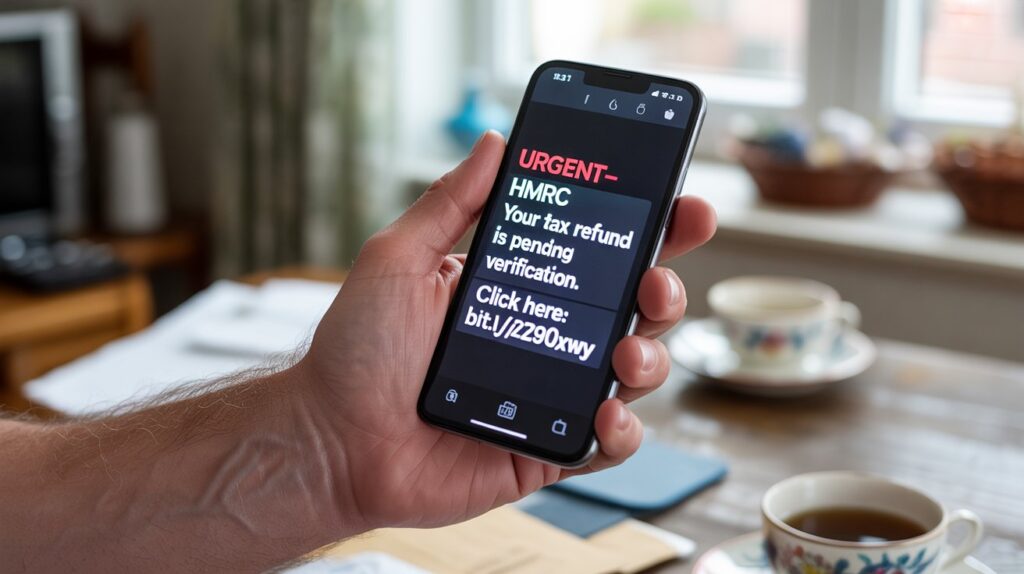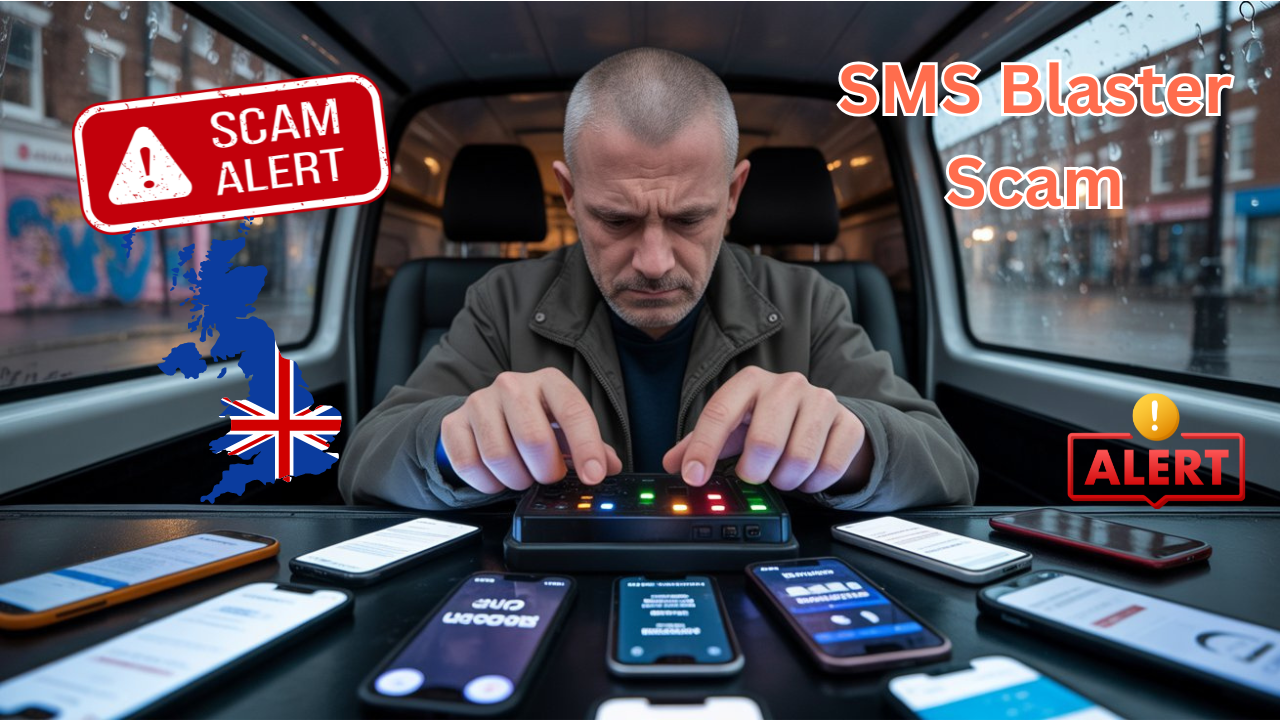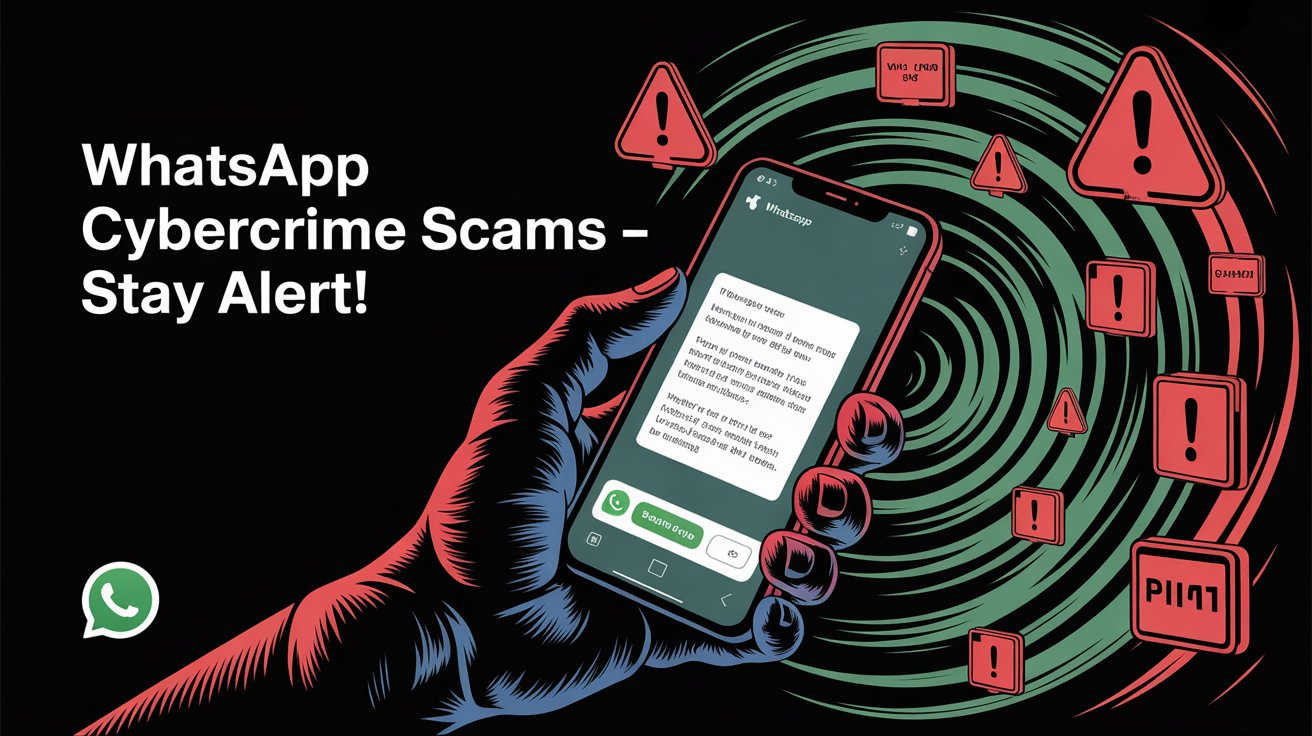In the ever-evolving world of digital fraud, a new and alarming tactic has emerged in 2025: the SMS Blaster Scam. Unlike traditional phishing scams that rely on mass texting from distant networks, this scam is far more sinister. Criminals are now using portable SMS blaster devices to mimic mobile towers, sending messages directly to phones nearby—even without knowing the recipients’ numbers.
As part of our ongoing UK scam alerts, this blog will uncover how the SMS blaster scam works, why it’s so dangerous, who’s being targeted, and most importantly, how you can protect yourself and your loved ones.
What is an SMS Blaster Scam?
The SMS Blaster Scam is a modern smishing (SMS phishing) technique where fraudsters use hardware devices, known as SMS blasters, to send out fake text messages. These devices impersonate cell towers and can send malicious texts to any mobile phone within a specific range.
What makes this method so terrifying is that it bypasses telecom-level spam filters. Because these messages are broadcast locally—direct from the scammer’s device to your phone—they often appear even more convincing and seem to come from trusted sources, such as banks, government agencies, or parcel delivery services.
This is not just another scam—it’s a sophisticated and high-tech fraud strategy, capable of causing immense damage in a short time.
Real-Life Case: The London SMS Blaster Incident
In June 2025, Metropolitan Police and the National Cyber Security Centre (NCSC) issued a warning about a disturbing new case in central London. A criminal was found driving around in a van equipped with an SMS blaster, sending hundreds of scam messages every hour to unsuspecting residents and commuters.
One victim received a text claiming to be from HMRC, stating she owed £485 in unpaid tax and needed to pay immediately to avoid legal action. Another text pretended to be from the Royal Mail, asking recipients to click a link to reschedule a missed delivery.
Dozens of people clicked on the links, leading to malware installation or phishing sites that harvested sensitive banking credentials.
This case represents the terrifying reality of the SMS Blaster Scam—a mobile, flexible, and effective scam capable of reaching victims on the go.

How Does the SMS Blaster Scam Work?
To better understand the scam, let’s break it down step-by-step:
Step 1: Device Setup
The scammer uses a hardware device that can act like a fake mobile tower. These are sometimes called “IMSI catchers” or “stingrays,” and while originally intended for law enforcement surveillance, criminals have obtained them on the dark web.
Step 2: Message Broadcasting
The scammer configures the device to broadcast fake text messages to nearby mobile devices. These messages are usually disguised as being from official organisations—like the NHS, DVLA, banks, or parcel companies.
Step 3: Victim Interaction
The user receives a seemingly legitimate message with a call to action: click a link, call a number, or reply with personal information.
Step 4: Exploitation
Victims who comply may:
- Click on phishing links
- Download malware
- Enter banking info
- Share one-time passwords (OTPs)
In many cases, victims don’t realise they’ve been targeted until their bank accounts are emptied or their identity is stolen.
Why Is This Scam So Effective?
Unlike traditional phishing attempts, the SMS Blaster Scam:
- Doesn’t require your phone number.
- Circumvents spam filters used by telecom providers.
- Exploits trust in mobile messaging.
- Uses local proximity, making detection harder.
This is a critical addition to our UK scam alerts database due to its advanced nature and the increasing number of victims.
Who’s Being Targeted?
Unfortunately, anyone with a mobile phone could be a target, but certain groups are more vulnerable:
- Elderly Individuals unfamiliar with tech.
- Busy Commuters distracted and likely to click quickly.
- Non-Tech-Savvy Users who may not understand the risks of fake texts.
- People Expecting Deliveries, refunds, or official updates.
Even tech-literate individuals have fallen victim because the messages are so convincing and well-timed.
Types of Messages Used in SMS Blaster Scam
Here are common templates scammers use:
- Bank Account Suspended: “Your account is temporarily frozen due to suspicious activity. Click here to verify.”
- Tax Refund Notification: “You are due a £342.50 tax refund. Claim now.”
- Parcel Delivery Attempt Failed: “Your package couldn’t be delivered. Reschedule now.”
- COVID Test Result: “You’ve been in contact with someone COVID positive. Get tested: [malicious link].”
These messages play on urgency and fear, pushing recipients to act without thinking.

How to Spot an SMS Blaster Scam
Even though these texts are sophisticated, you can still look out for tell-tale signs:
✅ Generic greetings (“Dear customer”)
✅ Suspicious-looking URLs
✅ Demands for immediate action or payments
✅ Grammar/spelling errors
✅ Requests for personal or banking info
Always verify directly with the organization via official channels. Never click suspicious links from texts.
How to Protect Yourself
🔐 iPhone Users
- Go to Settings > Messages > Filter Unknown Senders
- Keep your device updated
- Be wary of unfamiliar texts, even if they appear legitimate
🔒 Android Users
- Turn off 2G network support if your device allows it
- Use SMS filtering or spam blocking apps
- Never download APKs or click on unfamiliar links
🧠 General Tips
- Forward suspicious texts to 7726 (UK scam reporting number)
- Install and update security software
- Avoid sharing personal information through SMS
What Are Authorities Doing?
The NCSC, Ofcom, and the UK Cyber Resilience Centre are all investigating the proliferation of SMS blaster scams. Several mobile operators are also testing real-time monitoring tools that detect unusual message-broadcasting patterns.
Still, due to the mobile and local nature of this scam, enforcement remains tricky.
What To Do If You’ve Been Scammed
If you suspect you’ve fallen victim to the SMS Blaster Scam:
- Report the scam to Action Fraud at actionfraud.police.uk.
- Notify your bank immediately if you entered any financial details.
- Reset passwords and enable 2FA (Two-Factor Authentication).
- Run a security scan on your phone using trusted antivirus apps.
- Inform others—awareness is a powerful defense tool.
Why You Should Stay Updated with UK Scam Alerts
Scams like this show us how fast fraudsters adapt. Just when we think we’ve learned all the tricks, they invent new ones. This is why platforms like ScamFreeWorld.co.uk exist—to keep the public informed with daily UK scam alerts so they’re one step ahead.
Being proactive, reading scam updates, and staying alert is no longer optional—it’s a survival skill in the digital age.
Final Thoughts
The SMS Blaster Scam is unlike any phishing scheme the UK has faced before. It’s mobile, hyper-targeted, and technically advanced. With thousands of devices potentially in circulation and more scammers adopting this method, it’s vital that we stay vigilant.
Use your mobile wisely. Double-check every message. And bookmark our blog for regular UK scam alerts—because the more you know, the safer you stay.
Read More Trending Scams – https://scamfreeworld.co.uk/fake-savings-ads/




